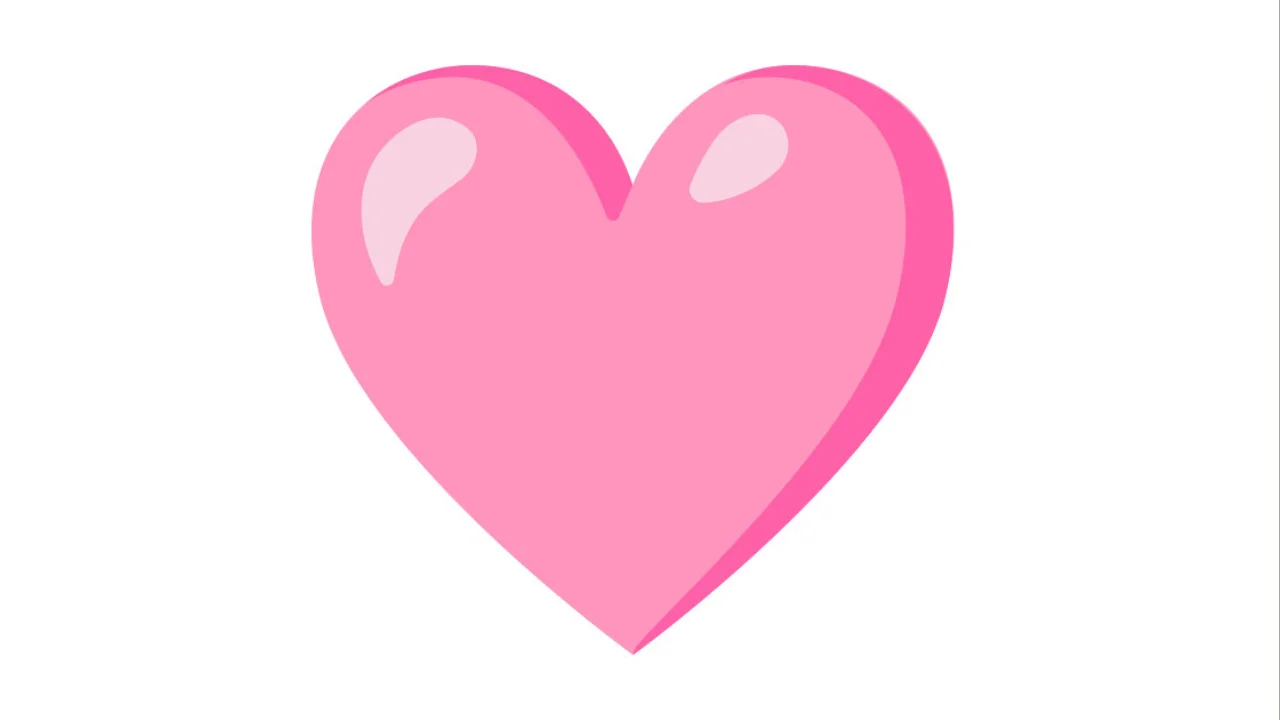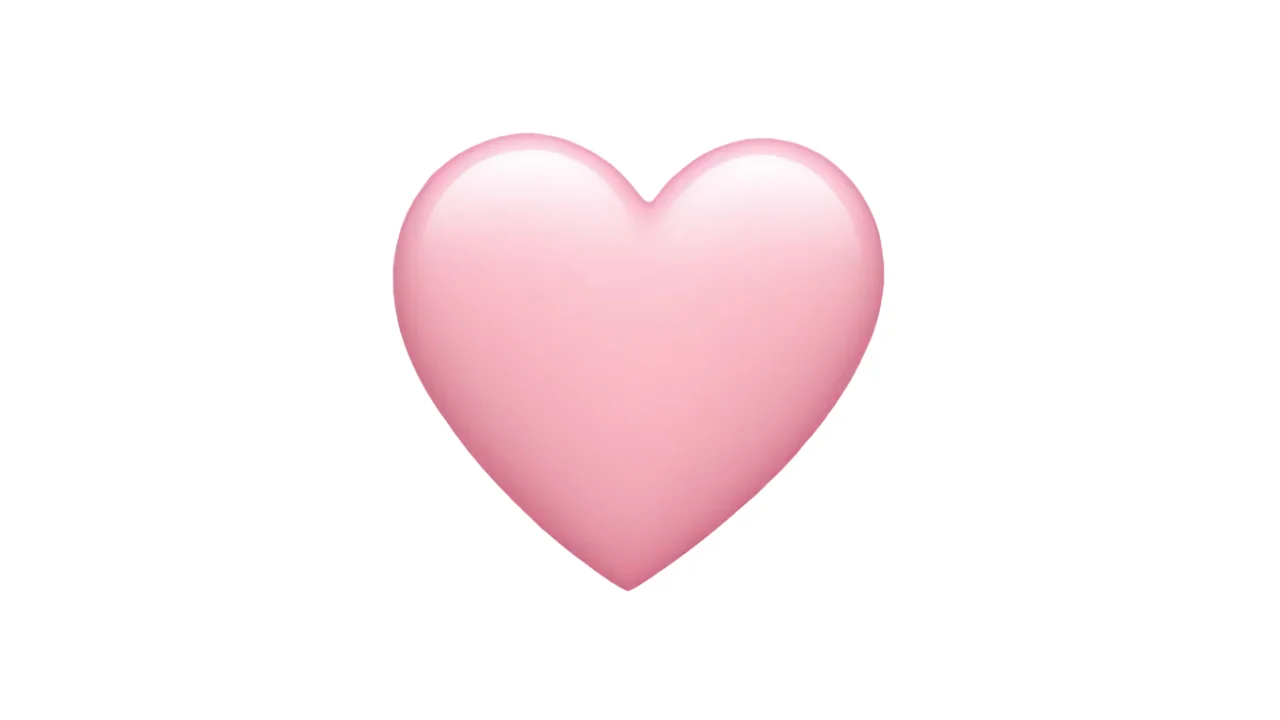The light pink heart emoji has become one of the most charming symbols in digital communication. It represents warmth, kindness, affection, and gentle emotions. Unlike the traditional red heart, this softer shade of pink carries a lighter, more playful tone. People use it in texts, social media posts, and comments to show appreciation without being too intense.
This emoji has found its way into everyday digital conversations, making it a favorite among those who want to express love or admiration in a subtle and aesthetically pleasing way.
ALSO READ: Funny Emojis Unicode, Memes And How To Use
History of the Light Pink Heart Emoji

Emojis were first introduced in the late 1990s in Japan. Over time, Unicode standardized emojis, allowing them to appear on different platforms like Apple, Android, and Windows. The light pink heart emoji was introduced as part of newer emoji updates to expand heart variations.
Its design and appearance differ slightly across devices, but the meaning remains consistent: a sweet, caring, and affectionate gesture. This emoji quickly gained popularity, especially on social media platforms like Instagram and TikTok, where aesthetics and soft visuals are celebrated.
Meaning of the Light Pink Heart Emoji
At its core, the light pink heart emoji symbolizes tenderness, friendship, and positive vibes. While the red heart is often linked to deep romantic love, the light pink heart is associated with softer, lighter emotions.
It conveys feelings such as:
-
Sweet admiration
-
Supportive friendship
-
Playful affection
-
Innocent love
This makes it perfect for conversations that don’t require the intensity of a red heart but still want to show care and warmth.
ALSO READ: TikTok Emojis PNG Thumbnails, Stickers, Design Tips And Edits
Usage in Digital Communication
The light pink heart emoji is versatile. People use it in texts with friends, family, or partners to make messages feel warmer and more thoughtful. For example:
-
A friend might send “Good luck 💕” to show support.
-
A family member may write “Miss you 💕” with the emoji to add tenderness.
-
On social media, influencers often use it to match aesthetic posts and captions.
The light pink shade also blends perfectly with modern digital aesthetics, making it popular among younger generations who enjoy soft, pastel-colored visuals.
Symbolism and Emotional Impact
Colors carry psychological meaning, and pink is often linked with compassion, calmness, and joy. The light pink heart emoji reflects these emotions. Unlike darker or more vivid colors, light pink promotes softness and innocence.
This symbolism makes the emoji an excellent choice when you want to express affection without overwhelming intensity. It sends a message of kindness, often making the recipient feel comforted and appreciated.
Differences Between Pink and Red Heart Emojis
While both are heart emojis, they convey different emotional tones.
| Emoji | Meaning | Common Use |
|---|---|---|
| ❤️ Red Heart | Deep love, romance, passion | Romantic relationships, strong emotions |
| 💕 Light Pink Heart | Tenderness, care, sweetness | Friendships, family, light affection |
The light pink heart emoji bridges the gap between casual friendliness and affectionate expression, making it ideal for various contexts where a red heart may feel too strong.
Popularity on Social Media
On platforms like Instagram, TikTok, and Twitter, the light pink heart emoji is a favorite among creators and fans of soft aesthetics. It often appears in captions, comments, and usernames. Many users pair it with pastel backgrounds, aesthetic quotes, or lifestyle posts.
For example, fashion bloggers might add it to their captions to maintain a cute, girly vibe, while music fans may use it when expressing admiration for their favorite artist. Its emotional softness makes it a symbol of modern online communication culture.
Cultural and Global Use
Across cultures, the light pink heart emoji is universally understood as a symbol of care and gentleness. While cultural interpretations of red or black hearts may differ, the light pink heart rarely carries negative meanings.
It’s often linked with:
-
K-pop fandoms, where pastel tones dominate fan content
-
Online communities focusing on positivity and mental health
-
Everyday conversations in different languages where sweetness needs to be expressed
This universal appeal shows its role as more than just a digital image—it’s a cultural connector.
Light Pink Heart Emoji in Branding and Marketing

Brands also use the light pink heart emoji to engage with audiences. Its gentle tone helps businesses appear approachable, caring, and customer-friendly. Beauty brands, fashion labels, and lifestyle companies often incorporate it in captions, promotions, and customer replies.
The emoji adds a touch of friendliness and emotional connection, making brands seem more human. It’s especially effective when targeting younger audiences who value digital communication that feels warm and personal.
Psychology Behind the Light Pink Heart Emoji
Psychologists say colors and symbols affect human emotions. The light pink heart emoji triggers feelings of safety, calmness, and appreciation. Its soft tone makes it less intimidating than red hearts, which can sometimes carry heavier emotional weight.
Using this emoji often helps reduce misunderstandings in conversations. It provides a balanced way to show you care without pressuring the receiver with overly intense emotions.
Examples of How to Use the Emoji
Here are some simple ways the light pink heart emoji fits into daily conversations:
-
“Congratulations on your new job 💕” – to show joy and support.
-
“Thank you for always being there 💕” – to express gratitude.
-
“Goodnight 💕” – to end a message with warmth.
These examples highlight how the emoji adapts to various contexts, whether casual, professional, or personal.
Variations Across Platforms
The light pink heart emoji looks slightly different on platforms:
-
Apple: A soft, rounded pink heart.
-
Google/Android: A pastel pink design with flat tones.
-
Samsung: A brighter pink with a glossy finish.
-
Twitter/X: A simple pink heart matching its minimal style.
These variations do not change its meaning but can impact how aesthetically pleasing it looks, depending on the platform.
Why People Love the Light Pink Heart Emoji
There are several reasons why people choose this emoji over others:
-
It’s gentle yet expressive.
-
It matches aesthetic preferences.
-
It conveys multiple emotions at once.
-
It avoids misunderstandings linked to romantic intensity.
This flexibility makes it one of the most beloved symbols in digital communication.
The Light Pink Heart Emoji and Modern Digital Culture
In today’s world, emojis are more than fun images—they are a language. The light pink heart emoji plays a vital role in this digital language. It represents the blending of emotions with visuals, shaping how people connect online.
From casual texting to online branding, it has grown into a cultural marker that represents care, kindness, and connection in a fast-paced digital age.
Frequently Asked Questions
What does the light pink heart emoji mean in texting?
The light pink heart emoji usually means care, tenderness, or admiration. It’s softer than the red heart, making it perfect for showing affection without suggesting deep romance.
Is the light pink heart emoji romantic?
Not always. While it can be used in a romantic context, it’s more often linked with friendship, family love, or general kindness. It’s less intense than the red heart, which is strongly tied to romance.
Why is the light pink heart emoji popular on social media?
It’s popular because its pastel shade matches modern aesthetic trends. Creators and brands use it in captions, comments, and usernames to express sweetness and positivity while keeping their content visually appealing.
Conclusion
The light pink heart emoji is more than just a symbol. It’s a reflection of modern communication, where emotions are shared through visuals. Representing sweetness, care, and warmth, it fills the gap between intense romance and casual friendliness.
Its universal meaning, adaptability across cultures, and popularity in branding make it a lasting part of digital expression. Whether used in personal chats, social media, or professional settings, this emoji continues to connect people in meaningful ways.